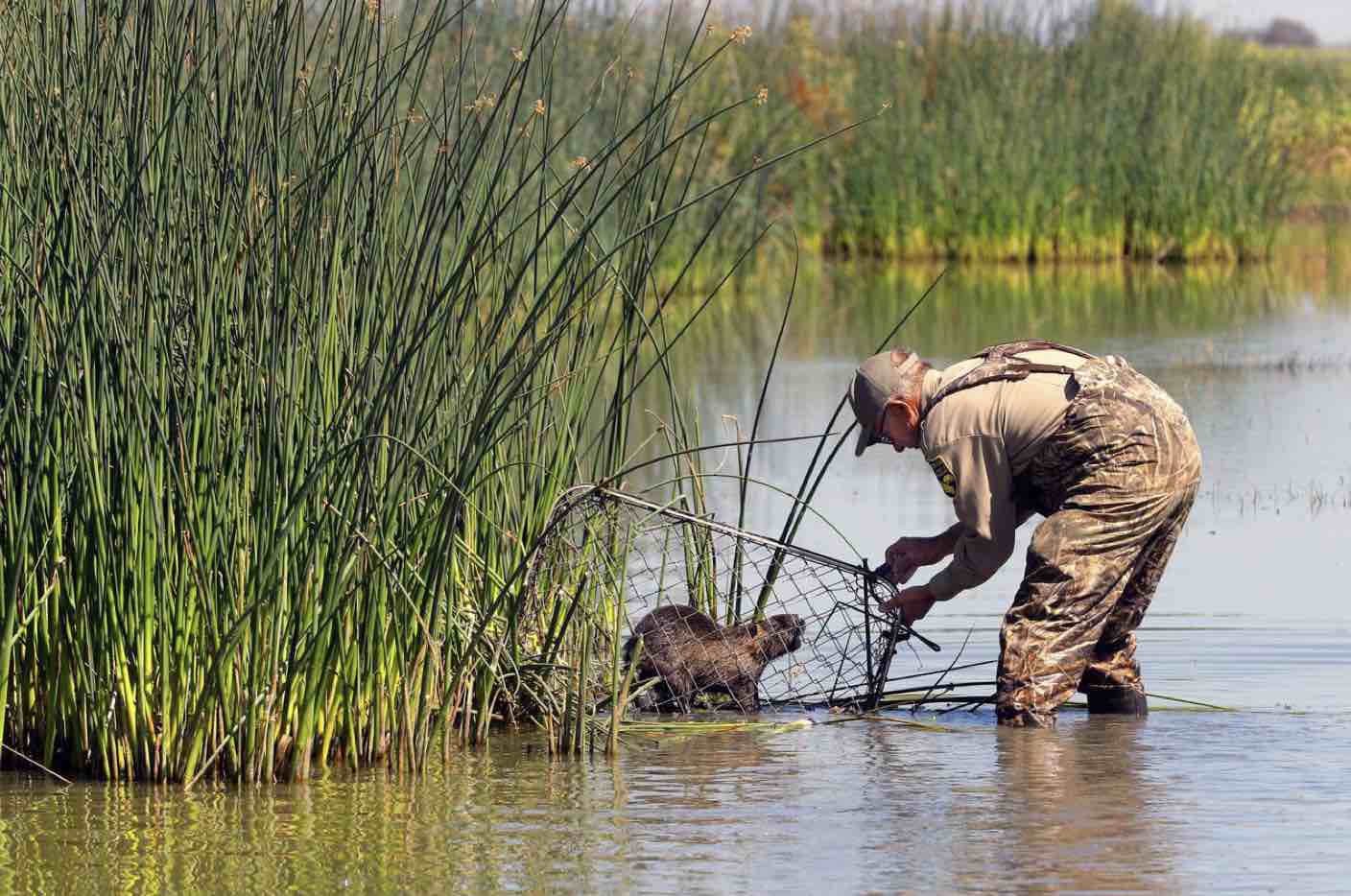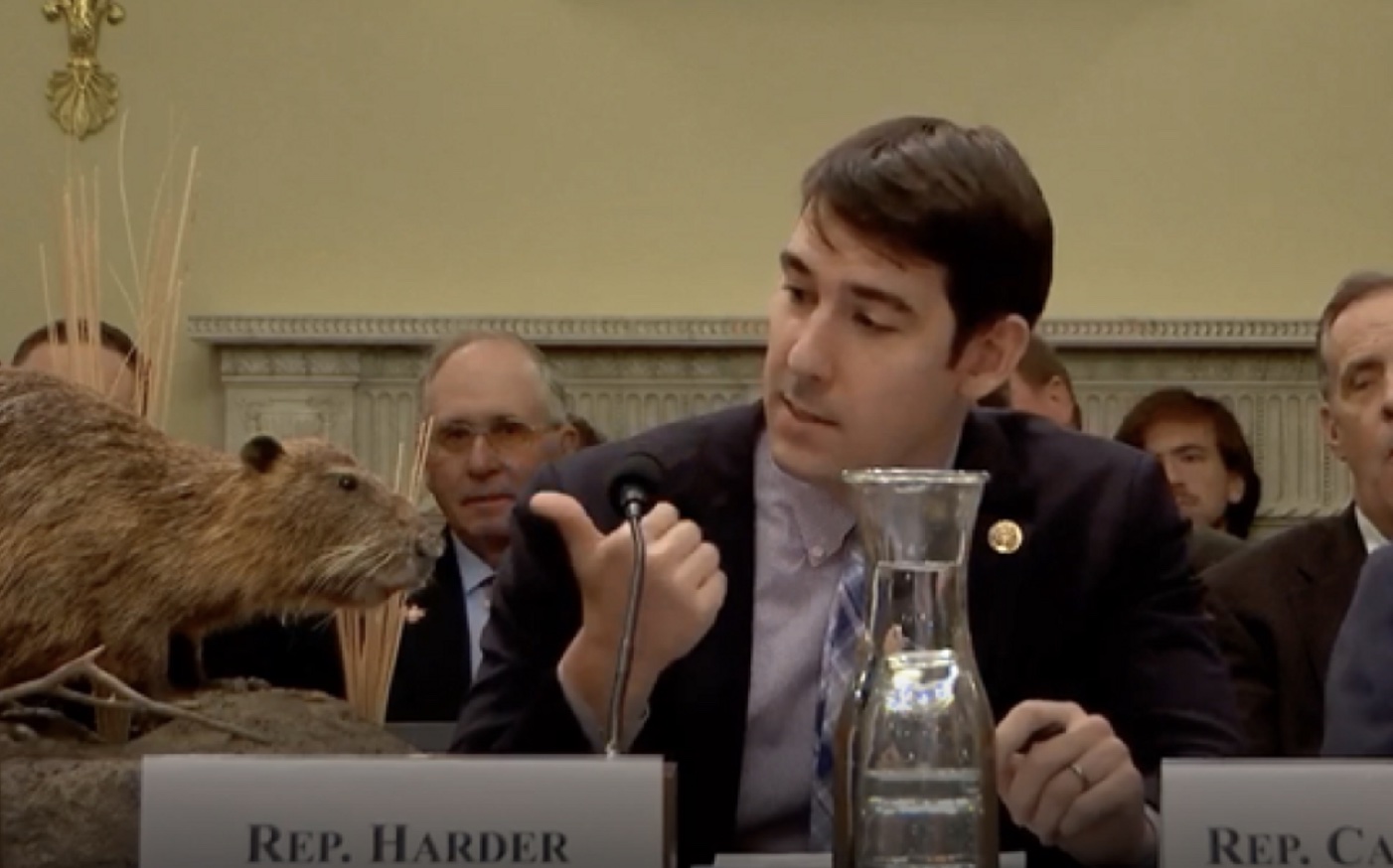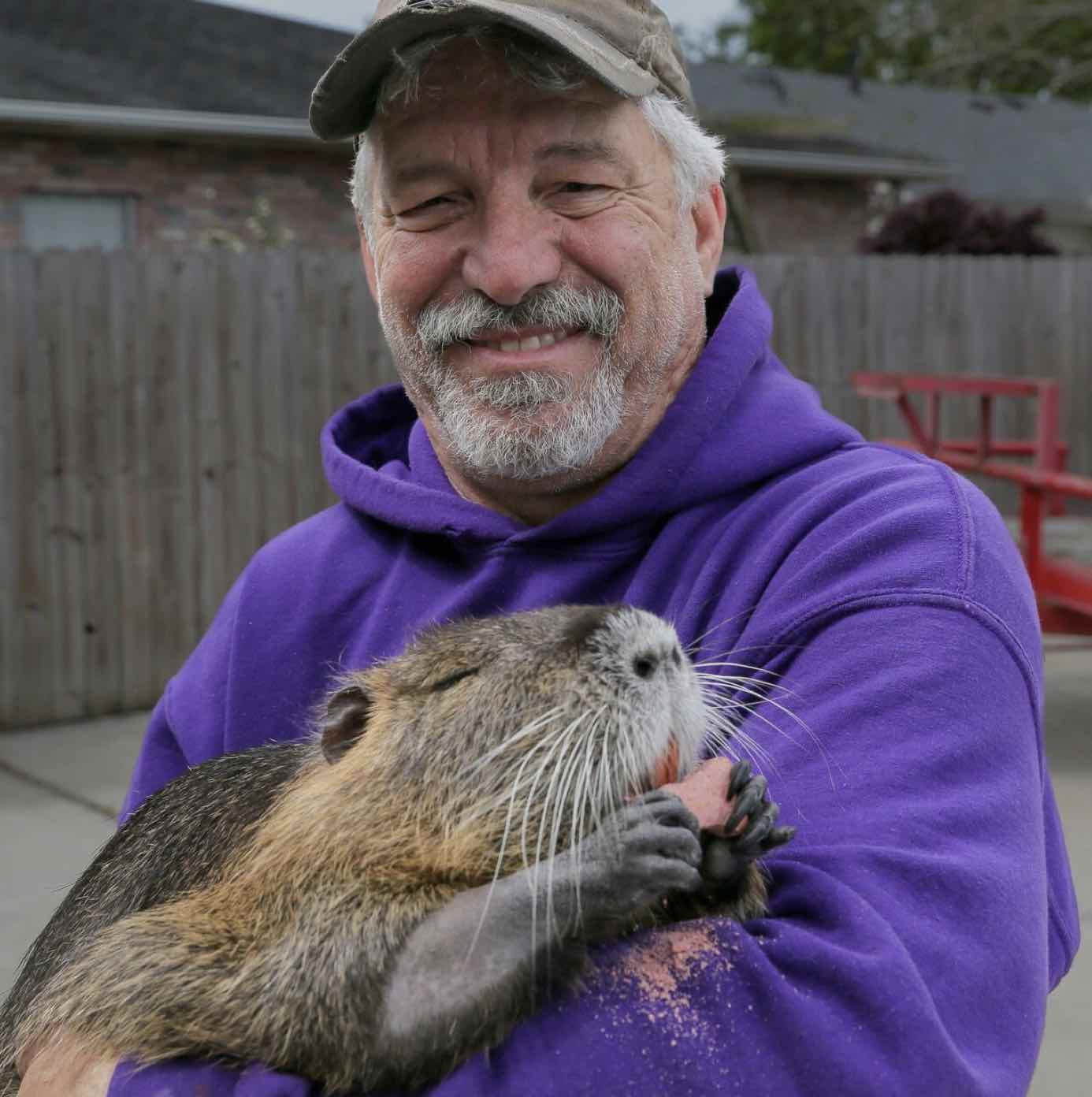Be on the Lookout for Rodents of Unusual Size With Orange Teeth

As discussed below, “The nutria’s voracious eating habits—they consume up to a quarter of their weight daily—have damaged thousands of acres of Louisiana coast, turning some wetlands into open water.”
Nutria will overpopulate without predators. There is a simple solution for nutria control in southern wetlands: alligators. Unfortunately, on Southern marshes, alligators are more despised than nutria so they are routinely overhunted. As we have learned on the Guadalupe Delta of South Texas, cane and marsh plants will recover quickly when alligators are numerous and large enough to take out 20-pound rodents.
NOTE: this article was originally published to WSJ.com on April 11, 2023. It was written by Adolfo Flores and Erin Ailworth.
The nutria, an invasive species native to South America, is wreaking havoc in U.S. wetlands, farmlands and golf courses
It’s the stuff of bad dreams. Giant rodents with Cheetos-orange teeth are swarming through the coastal U.S., damaging almond trees, golf courses and even the occasional bridge.
The nutria, a semiaquatic mammal native to South America, was introduced to the U.S. in the late 1800s for the fur trade. After escaping captivity, the critters, which can weigh over 20 pounds and breed year-round, proved hard to corral again.
In Texas, nutria are on a “most unwanted” list. In Oregon, there’s a year-round open season on them. California is hoping the invasive species will start to rat on itself.
“Rodents of unusual size (R.O.U.S.) do exist, and they do lurk in marshes!” Virginia’s Department of Wildlife Resources warns on its website.
Beleaguered states are looking to Maryland for inspiration. Federal and state officials in Maryland spent more than two decades and $30 million to eliminate nutria, and officials there say they’re ready to help other states.
Trevor Michaels, a supervisory wildlife biologist at the U.S. Department of Agriculture, led Maryland’s eradication effort. His team covered nearly half a million acres of land and marsh hunting for the invasive rodent using a technique dubbed “rolling thunder,” where they worked in a grid to systematically trap and remove nutria before moving on to the next area. In 2015, 14,000 of the rodents later, Maryland captured its last nutria—though it didn’t officially declare the species gone from the state until last year.
“We went a year or two before any of us really thought that those were the last ones,” Mr. Michaels said. “We really didn’t believe it.”

A senior biologist with the California Department of Fish and Wildlife finds a trapped nutria at the China Island wildlife area. Credit: MICHAEL MACOR/THE SAN FRANCISCO CHRONICLE/GETTY IMAGES
California is already employing parts of Maryland’s playbook, and hopes to use scent dogs that worked in Chesapeake Bay to ferret out nutria in the Sacramento-San Joaquin River Delta. Golden State officials also are looking to improve on a “Judas nutria” strategy used in Maryland, where a few of the animals were trapped and fixed, outfitted with radio collars, then released to lead officials to other nutria.
“Nutria don’t have necks, so it’s an extreme challenge to try and collar them,” said Valerie Cook, manager of California’s nutria eradication program. Instead California wants to use satellite-enabled tags that can be tracked remotely.
California Rep. Josh Harder said he first learned of the nutria problem from farmers in his district complaining of the giant rodents chomping on their almond trees.
Not long after, he showed up in Congress with a mounted nutria named Nellie―which he’d borrowed from the USDA—to lobby for expanding the Nutria Eradication and Control Act of 2003 beyond its two original states, Maryland and Louisiana. Once everyone saw Nellie’s size, he said, it was a pretty easy sell—the act now applies to all infested states.
Even the famously friendly Midwest is hiding its welcome mat after two of the creatures were caught in beaver traps in Illinois in 2022.
The Illinois Department of Natural Resources is working with the USDA’s Wildlife Services to survey for nutria. Wildlife Services, which helps eradicate invasive species, offed more than 1,500 nutria in 2022.

California Rep. Josh Harder showed up in Congress with a mounted nutria named Nellie. Credit: REP. JOSH HARDER
That’s a sliver of the 400,000 nutria that Louisiana tries to eliminate each year. Its swamp lands are so infested that it offers a nutria bounty, currently set at $6 for every tail brought in during the state’s nutria hunting season.
Louisiana has paid $30.2 million in bounties for 6.1 million nutria harvested since beginning its Coastwide Nutria Control Program in 2002.
The nutria’s voracious eating habits—they consume up to a quarter of their weight daily—have damaged thousands of acres of Louisiana coast, turning some wetlands into open water.
Louisiana received grant money in the late 1990s to research the nutritional content of nutria meat and market it as a human food source, but the effort went nowhere.
“It was really ahead of its time,” says Jennifer Hogue-Manuel, a state biologist with the Louisiana Department of Wildlife and Fisheries, who has hunted and eaten nutria. “Nowadays there is so much more interest in eating local and trying unusual things thanks to the Food Network.”
She’s received calls from private chefs and restaurants interested in serving nutria—which she says tastes like wild rabbit.
Rick Boatner, with Oregon’s Department of Fish and Wildlife, advises preparing nutria in a slow cooker as if making pulled pork. It isn’t a popular suggestion.
“Most people think, something with a rat tail I am not going to eat,” says Mr. Boatner, an invasive species biologist.
Despite the havoc they wreak, nutria have a few fans. A Louisiana couple recently made headlines when state wildlife officials tried to seize Neuty, a nutria they’d rescued from the roadside in late 2020 after its mother and siblings were killed by a vehicle.
Neuty quickly went from drinking kitten formula out of a syringe to eating sweet potatoes and the occasional piece of fried chicken, said owner Myra Lacoste.

Denny Lacoste holds his rescued nutria, which was granted a reprieve by Louisiana wildlife authorities last month. Credit: THE TIMES-PICAYUNE/THE NEW ORLEANS ADVOCATE/AP
“I had no interest in ever raising a nutria but he was so cute,” Ms. Lacoste said. “They destroy the land, I know all of this and we took a chance when we kept him as a baby.”
It wasn’t long before Neuty became a local celebrity, catching attention whenever Ms. Lacoste’s husband, Denny, took the nutria along on errands in his truck, prompting pictures and social-media posts. A New Orleans classic rock station, Bayou 95.7, made Neuty its mascot; and a TikTok account in the nutria’s name amassed 4,000 followers.
It was that popularity—underpinned by thousands of signatures on a petition and the support of a state senator and some attorneys—that prompted the Louisiana Department of Wildlife and Fisheries to stop trying to seize Neuty from the Lacostes last month.
“My husband would’ve been devastated,” Ms. Lacoste said. “He’s obsessed with him.”
—
For more posts like this, in your inbox weekly – sign up for the Restoring Diversity Newsletter
